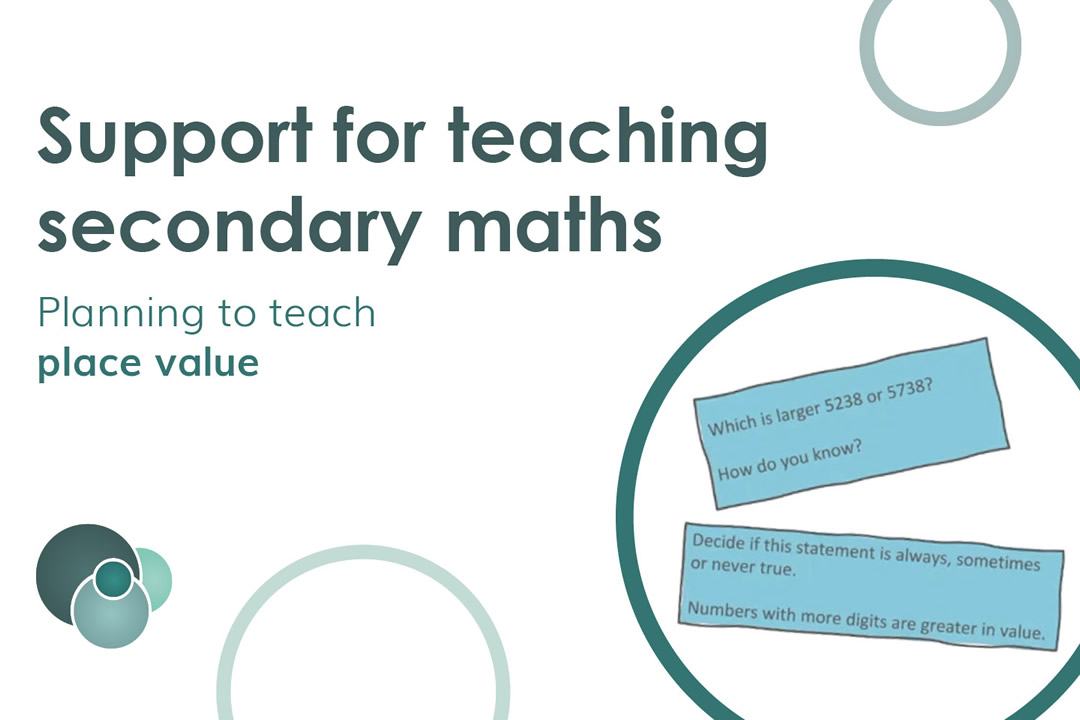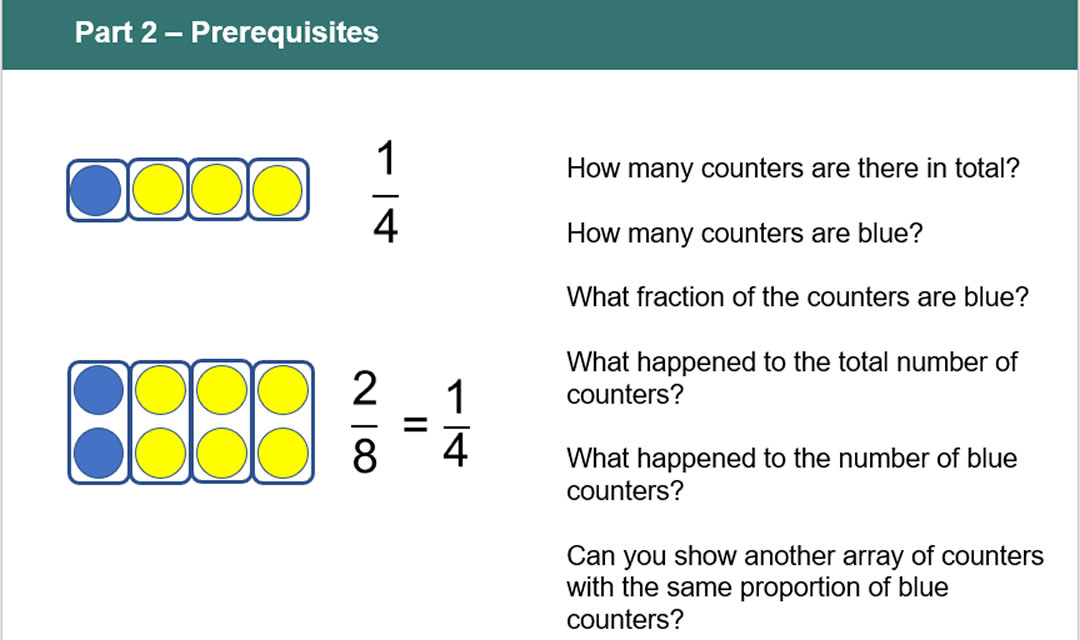Which KS3 topic are you teaching next?
New videos, PowerPoint slides and guidance documents provide ideas and resources for teaching KS3 topics
25/11/2020

Place value, fractions, directed numbers, prime factors, decimals and percentages… Whether you are new to teaching these topics at KS3, or have taught them for years and are looking for fresh ideas and inspiration, we can help. Experienced teachers offer advice, example questions and tips for avoiding student misconceptions in these new Planning to teach videos and accompanying resources.
Expert knowledge
Created by teachers with several years of KS3 teaching experience, the videos offer honest reflections on the mistakes that can be made when teaching these topics.
‘When I first started teaching, I used a number line for teaching directed numbers. I would show examples on the board […] so if we were adding a negative number we would move to the left, and if we were subtracting a negative number we would move to the right.
'My students would often get in a muddle about which direction they should be travelling in, and they were takers in this scenario, being given rules to follow without any appreciation of what was happening mathematically.’
They also offer a whole range of ideas and suggestions to refine your teaching, whether you are an NQT or an experienced teacher.
‘A few years back I was introduced to double sided counters, and they have been a real revelation for me. They allow students to see the maths more visibly, and to create their own rules. They have moved from being rule takers to rule makers, and they can behave more mathematically.’
Comprehensive videos
Each video is around 20-30 minutes, and features animated PowerPoint slides narrated by a secondary maths teacher (and Mastery Specialist) who offers insights from their own classroom experience.
Videos explore:
- What the big idea is behind the topic being taught
- What prerequisite knowledge students need in order to grasp the topic fully
- Key teaching aspects including resources and questions
- Why the topic is important.
Each one follows this format, and tackles the topic in a way that new teachers, non-specialists and teaching assistants can access. They are also available for download, to watch in a departmental meeting or training session.
Accompanying PowerPoints
The slides that feature in the videos are available to download for use in your classroom. You can use them in your teaching, for independent professional development, or collaboratively with a colleague or your whole department.
Example questions
All the videos include questions that will probe students’ knowledge of the topic being taught and ensure that their understanding is secure. Questions are both created by the video presenters and drawn from a range of high-quality resource providers. For teachers new to teaching a topic, these are a great starting point for lesson planning, and for teachers familiar with the topic, there might just be something new or a different way of thinking about how students learn.
Supporting documents
Along with the video and PowerPoint, there is a PDF document which explains:
- What students need to understand
- Mistakes students can make and what might go wrong
- The skills students require from KS2
- What the expectations are of the topic at KS3
- Key language and skills students need
- How the topic underpins future learning
- Links to useful websites, resources and questions.
Key topics
The videos published so far cover:
- Place value
- Prime factors
- Directed numbers
- Adding and subtracting fractions
- Fractions, decimals and percentages.
Further videos will explore topics including ratio, multiplicative reasoning, solving linear equations, circles, constructions and more. Look out for them being published on the Planning to teach page over the winter.
<p>Check out the full videos and resources</p>
<p>If you teach KS3 maths, download the videos, PowerPoints and resources that will tell you and your students exactly what you need to know</p>
Explore
